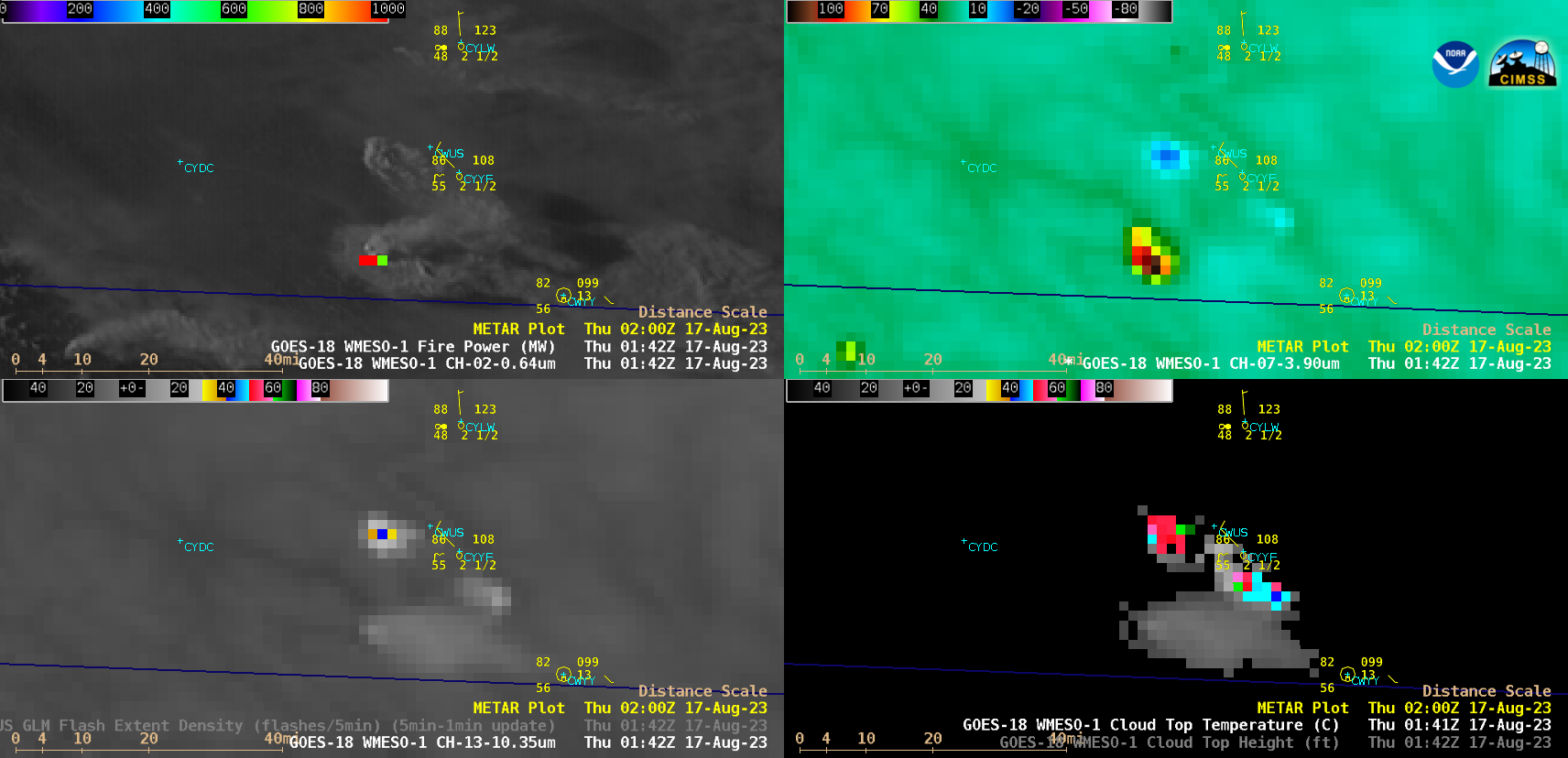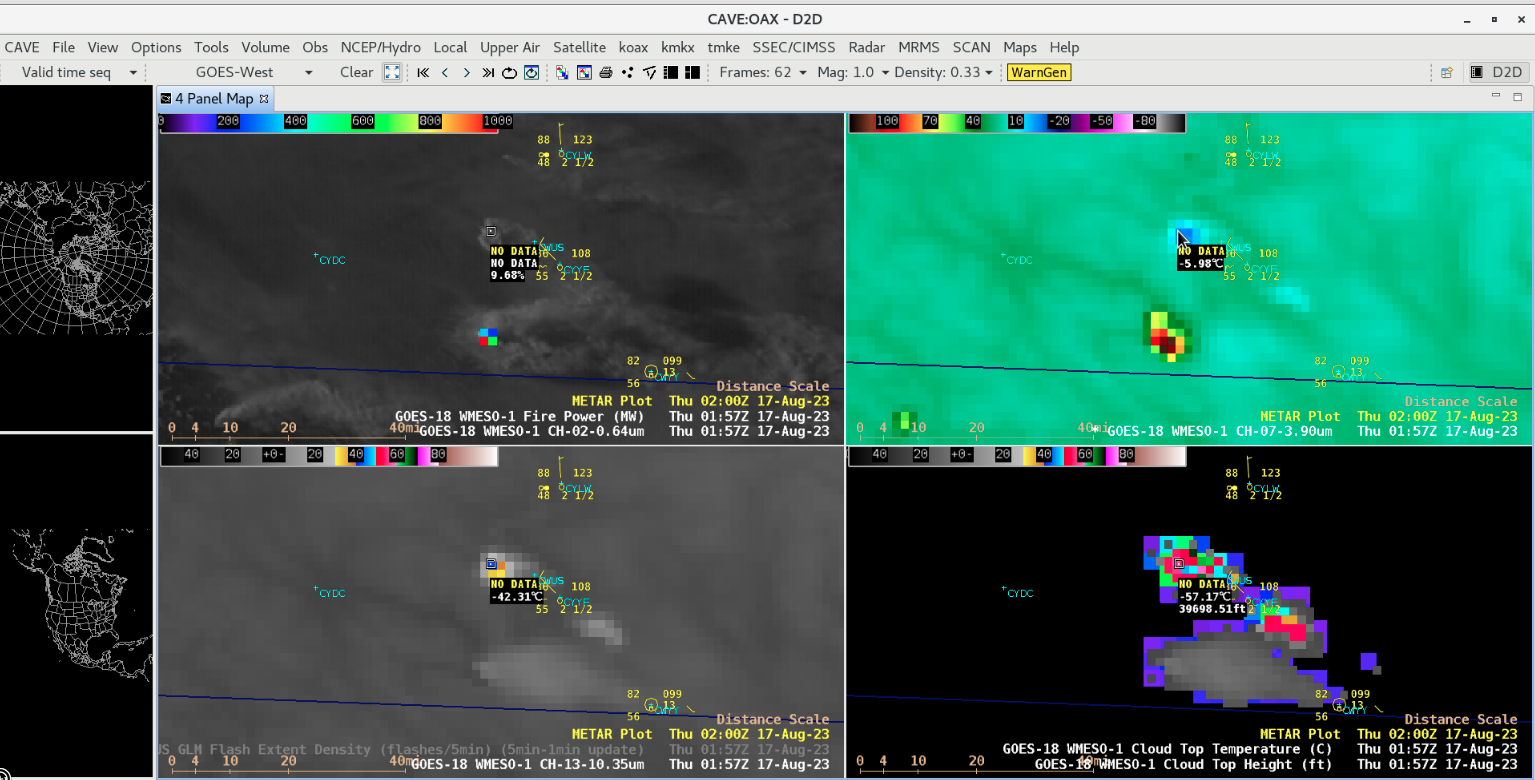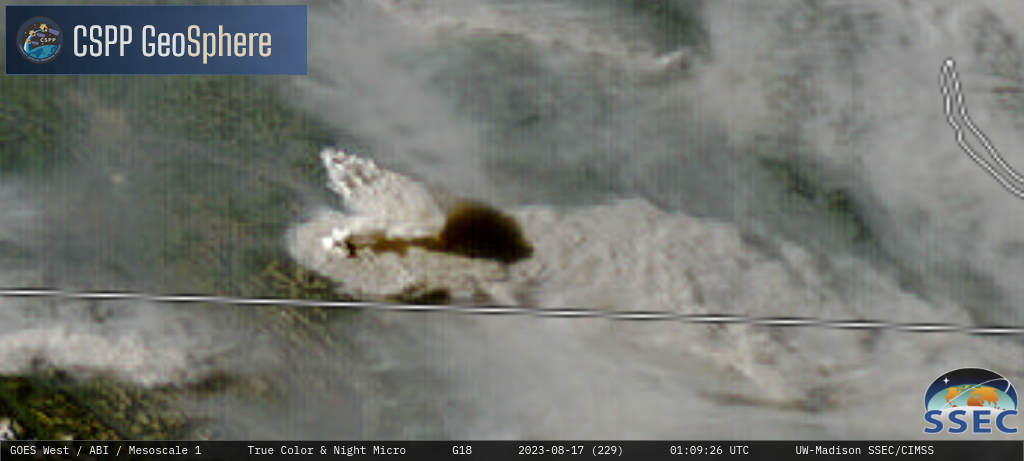Crater Creek Fire in British Columbia produces a pyrocumulonimbus cloud

GOES-18 “Red” Visible (0.64 µm) + Fire Power derived product (top left), Shortwave Infrared (3.9 µm, top right), “Clean” Infrared Window (10.3 µm, bottom left) and Cloud Top Temperature derived product (bottom right) [click to play animated GIF | MP4]

Cursor sampling of GOES-18 “Red” Visible (0.64 µm) + Fire Power derived product (top left), Shortwave Infrared (3.9 µm, top right), “Clean” Infrared Window (10.3 µm, bottom left) and Cloud Top Temperature derived product (bottom right) at 0142 UTC [click to enlarge]

Cursor sampling of GOES-18 “Red” Visible (0.64 µm) + Fire Power derived product (top left), Shortwave Infrared (3.9 µm, top right), “Clean” Infrared Window (10.3 µm, bottom left) and Cloud Top Temperature derived product (bottom right) at 0157 UTC [click to enlarge]


